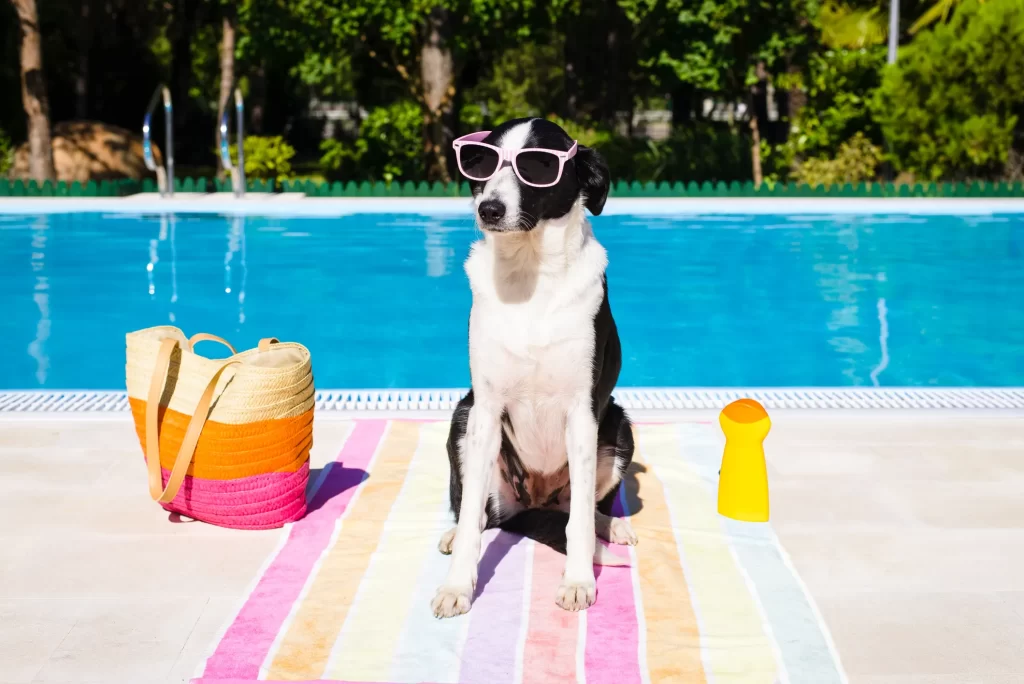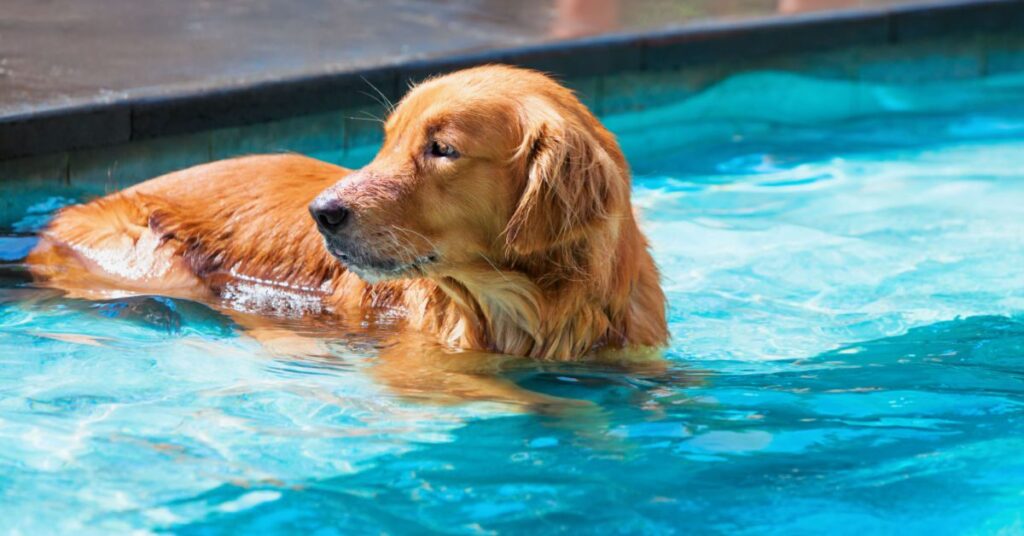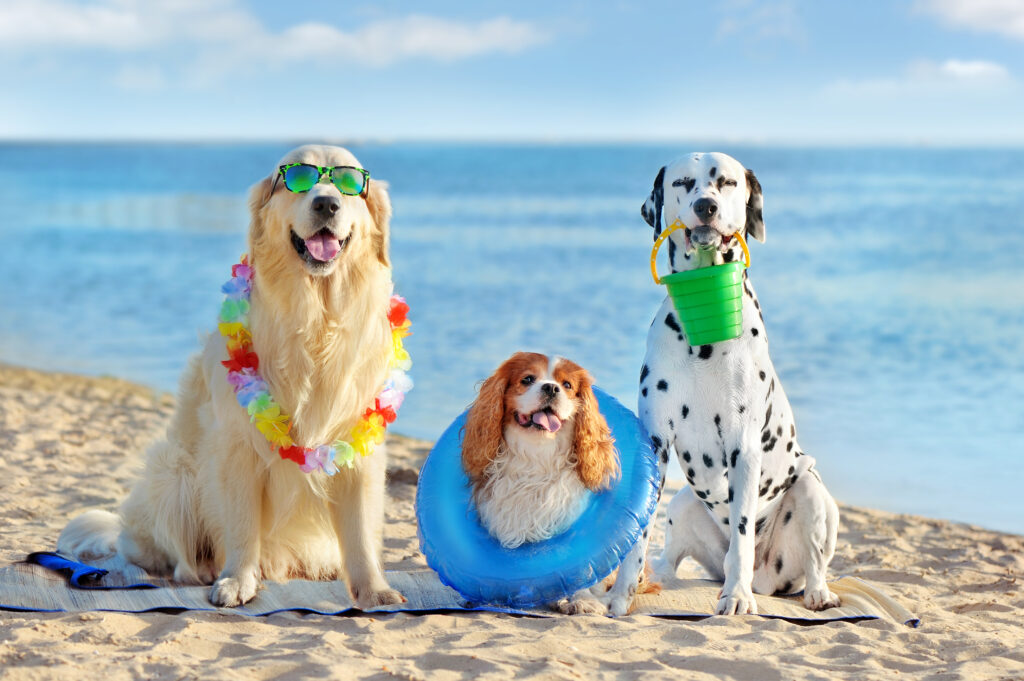Summer Sips: Essential Hydration Tips to Keep Your Dog Cool and Comfortable
Tabla de contenido
Introducción
As the summer sun climbs high and the days grow longer, the joy of spending time outdoors with our furry companions increases. However, with the rising temperatures comes a crucial responsibility for every dog owner – ensuring their pet stays well-hydrated. Hydration is as vital for dogs as it is for humans, especially during the summer months when the risk of dehydration is significantly higher.
Dehydration in dogs can lead to serious health issues, including heatstroke, kidney failure, and even death in extreme cases. Unlike humans, dogs have a limited ability to sweat. They primarily cool down by panting, which increases their need for water. Therefore, understanding and managing your dog’s hydration needs becomes a top priority during the warmer months.
But why is hydration so essential for dogs? Water plays a critical role in every aspect of a dog’s physiological functions. It aids in digestion, helps regulate body temperature, facilitates nutrient absorption, and is vital for joint health. A well-hydrated dog is not only healthier but also more energetic and happier.
Moreover, summer activities like hiking, playing fetch, or even a simple walk in the park can quickly deplete your dog’s hydration levels. Recognizing the signs of dehydration and knowing how to keep your dog hydrated can make all the difference in enjoying a safe and fun summer with your four-legged friend.
In this comprehensive guide, we will delve into the intricacies of keeping your dog hydrated during the summer. From understanding how much water your dog needs to exploring practical tips for maintaining hydration, we will cover everything you need to know to ensure your dog stays healthy and hydrated in the heat.
Understanding Your Dog’s Hydration Needs
Hydration is not a one-size-fits-all scenario, especially when it comes to our canine companions. Several factors influence how much water a dog needs daily, and understanding these can help you ensure your dog stays adequately hydrated throughout the summer.
How Much Water Do Dogs Need?
The general rule of thumb for dog hydration is that a healthy dog should drink approximately one ounce of water per pound of body weight each day. For instance, a 30-pound dog would need about 30 ounces of water daily under normal conditions. However, this is just a baseline. The actual amount can vary based on several factors, including the dog’s diet, activity level, and the weather.
During hot summer days, a dog’s water requirement can increase significantly. This is because dogs regulate their body temperature primarily through panting, which not only helps cool them down but also leads to a loss of moisture. Therefore, it’s crucial to ensure that your dog has access to more water than usual during the summer months.
Factors Affecting a Dog’s Hydration Needs
- Tamaño: Larger dogs will naturally require more water than smaller dogs. Their bigger bodies and higher energy levels contribute to a greater need for hydration.
- Age: Puppies and senior dogs may need more attention to their hydration. Puppies are often more active and can dehydrate quickly, while older dogs may have underlying health conditions that affect their hydration needs.
- Breed: Some breeds are more prone to dehydration than others. Brachycephalic breeds, like Bulldogs and Pugs, with their short noses, may find it harder to stay cool and hydrated.
- Activity Level: An active dog who loves to play and run, especially in the heat, will need more water. If you’re taking your dog on hikes or engaging in outdoor activities, their water intake should increase accordingly.
Understanding your dog’s individual needs is key. Always observe your dog’s behavior and hydration habits, and adjust their water intake as necessary. When in doubt, consult with your veterinarian to get a more tailored guideline based on your dog’s specific needs.
Practical Tips to Keep Your Dog Hydrated
Ensuring your dog stays hydrated in the summer isn’t just about leaving a bowl of water out. It involves a proactive approach to meet their hydration needs. Here are some practical tips to keep your dog well-hydrated during the warmer months:
- Regularly Refreshing the Water Dish: Dogs are more likely to drink clean, fresh water. Make it a habit to change the water in your dog’s bowl at least twice a day. This not only encourages them to drink more but also prevents the growth of bacteria.
- Using a Pet Water Fountain: Many dogs are enticed by the sound and sight of running water. A pet water fountain can stimulate their interest in drinking water. These fountains continuously circulate water, keeping it fresh and appealing.
- Watering Down Kibble or Using Wet Food: If your dog primarily eats dry food, consider adding water to their kibble. This can help increase their water intake. Alternatively, incorporating wet food into their diet can also boost hydration, as it has a higher moisture content.
- Making Ice Cubes or Freezing Other Liquids: Ice cubes can be a fun and refreshing treat for dogs. You can freeze plain water or make ice cubes with dog-safe ingredients like low-sodium broth or diluted fruit juices. These can provide hydration and relief from the heat.
- Making Dog-Friendly Smoothies: Blend dog-safe fruits like bananas or blueberries with plain yogurt and water to create a hydrating smoothie. Freeze these in ice cube trays for a quick, hydrating snack.
- Carrying Water During Outdoor Activities: Always bring a portable water bottle or bowl for your dog during walks, hikes, or trips to the park. Offer water frequently, especially if your dog is active.
- Providing Multiple Sources of Fresh Water at Home: Place water bowls in different areas of your home and outdoor space. This ensures that your dog has access to water no matter where they are.
- Giving Ice Cubes as Treats: Many dogs enjoy playing with and munching on ice cubes. It’s a simple way to keep them hydrated and cool, especially on hot days.
- Hydrating During Exercise: During and after exercise, offer your dog small amounts of water to prevent dehydration. Avoid letting them drink excessive amounts quickly, as this can lead to health issues.
By incorporating these tips into your daily routine, you can significantly improve your dog’s hydration, ensuring they stay healthy and happy during the summer.
Recognizing and Responding to Dehydration
Dehydration in dogs is a serious concern, especially during the hot summer months. Being able to recognize the signs and knowing how to respond can be crucial in preventing severe health complications.
Signs of Dehydration in Dogs
- Excessive Panting: While panting is normal for dogs, especially in the heat, excessive panting can be a sign of dehydration or overheating.
- Dry Nose and Gums: A dog’s nose should typically be wet. Dry, sticky, or pale gums and a dry nose can indicate dehydration.
- Lethargy: If your dog seems unusually tired, sluggish, or uninterested in activities they usually enjoy, it could be a sign of dehydration.
- Loss of Appetite: Dehydrated dogs often lose their appetite. If your dog is refusing food, it could be a cause for concern.
- Sunken Eyes: This is a more severe sign and indicates significant dehydration.
- Elasticity of Skin: Gently pinch your dog’s skin; if it doesn’t spring back quickly, your dog might be dehydrated.
Health Effects of Prolonged Dehydration
Prolonged dehydration can lead to serious health issues in dogs, including:
- Kidney Failure: The kidneys rely on adequate hydration to function properly. Dehydration can quickly lead to kidney problems.
- Heatstroke: This is a life-threatening condition that requires immediate veterinary attention.
- Organ Failure: Prolonged dehydration can cause multiple organ systems to fail.
Emergency Measures for Severe Dehydration or Heatstroke
If you suspect your dog is severely dehydrated or suffering from heatstroke:
- Move to a Cool Area: Get your dog out of the heat immediately.
- Provide Water: Offer small amounts of cool (not cold) water. Drinking too quickly can cause vomiting or other issues.
- Cool Down: Use wet towels or cool water to dampen your dog’s body. Avoid ice or very cold water, as this can cause shock.
- Immediate Veterinary Care: Heatstroke and severe dehydration are emergencies. Take your dog to a vet as soon as possible.
Being vigilant and responsive to the signs of dehydration can save your dog’s life. Always err on the side of caution and consult with a veterinarian if you have any concerns about your dog’s hydration status.
Preventive Measures for Dehydration
Preventing dehydration is key to maintaining your dog’s health during the summer. By taking proactive steps, you can ensure your dog remains hydrated and safe from the risks associated with high temperatures and dehydration.
- Avoiding Peak Sun Hours for Walks: Schedule walks during the cooler parts of the day, typically in the early morning or late evening. The intense heat of midday sun can quickly lead to dehydration and overheating.
- Revisiones veterinarias periódicas: Regular visits to the vet are crucial for maintaining your dog’s overall health. A vet can provide specific advice on your dog’s hydration needs based on their health, age, and breed.
- Creating a Cool Environment: Ensure your dog has access to a cool, shaded area, especially when they are outside. Indoors, provide a comfortable and cool resting place away from direct sunlight.
- Monitoring Water Intake: Keep an eye on how much water your dog is drinking. If you notice a decrease in their water intake, it could be an early sign of a health issue.
- Educating Yourself: Understanding the signs of dehydration and the importance of hydration can help you make better decisions for your dog’s health.
- Hydration on the Go: When traveling or going on outdoor adventures with your dog, always bring enough water for both of you. Portable dog water bottles or collapsible bowls are great for on-the-go hydration.
- Balanced Diet: A balanced diet plays a crucial role in your dog’s hydration. Some foods have higher moisture content and can help maintain hydration levels.
- Avoiding Overexertion: During hot days, limit intense physical activities. Overexertion can lead to rapid dehydration and heatstroke.
- Acclimatization: Gradually acclimate your dog to warmer temperatures. Sudden exposure to high heat can be dangerous.
- Hydration Aids: Consider using hydration supplements or moist foods that can help maintain fluid balance, especially for dogs that are reluctant to drink enough water.
By implementing these preventive measures, you can significantly reduce the risk of dehydration in your dog and ensure they enjoy a healthy and happy summer.
Hydration Products for Dogs
In addition to the natural methods of keeping your dog hydrated, there are various products on the market designed to aid in this crucial aspect of pet care. These products can be particularly useful for busy pet owners or for dogs that are finicky about their water intake.
- Review of Pet Water Fountains: Pet water fountains are an excellent way to encourage dogs to drink more water. They continuously circulate and filter the water, keeping it fresh and appealing. Many models also feature adjustable flow settings to cater to your pet’s preference. Brands like Drinkwell and PetSafe offer a range of fountains that vary in size and design, suitable for different dog breeds and household setups.
- Portable Water Bottles for Dogs: These are essential for dog owners on the go. Portable water bottles come with a built-in bowl and are designed for easy drinking, making them perfect for walks, hikes, or long car rides. Look for bottles that are leak-proof, easy to carry, and made from non-toxic materials. Brands like H2O4K9 and Highwave offer durable and convenient options.
- Other Recommended Products:
- Hydration Supplements: Products like dog-safe electrolyte supplements can be added to your dog’s water to encourage drinking and replenish lost electrolytes.
- Moisture-Rich Dog Foods: Incorporating wet food into your dog’s diet can significantly increase their water intake. Brands like Hill’s Science Diet and Royal Canin offer wet food formulas that are not only hydrating but also nutritionally balanced.
- Cooling Mats and Vests: While not directly related to drinking, cooling mats and vests can help manage your dog’s body temperature, reducing the amount of water lost through panting.
When selecting hydration products for your dog, it’s important to consider their specific needs and preferences. Always ensure that the products are made from safe, non-toxic materials and are appropriate for your dog’s size and breed.
Conclusión
As we’ve explored in this comprehensive guide, keeping your dog hydrated during the summer is not just a matter of comfort, but of health and safety. The importance of hydration in maintaining your dog’s well-being cannot be overstated, especially in the face of rising temperatures and increased outdoor activity.
From understanding the specific hydration needs of your dog based on their size, age, breed, and activity level, to implementing practical tips like refreshing their water dish regularly, using pet water fountains, and providing moisture-rich foods, every step taken towards ensuring adequate hydration is a step towards a healthier, happier pet.
Recognizing the signs of dehydration and knowing how to respond are crucial skills for any dog owner. By staying vigilant and proactive, you can prevent the serious health issues that arise from dehydration and heatstroke. Regular vet check-ups, avoiding walks during peak sun hours, and using hydration aids are all part of a holistic approach to your dog’s summer care.
The market offers a variety of products designed to help keep your dog hydrated, from innovative water fountains to portable water bottles and hydration supplements. These tools can make it easier to ensure your dog gets the necessary amount of water, even on the busiest of days or during long trips.
In conclusion, the key to a fun and safe summer with your furry friend lies in understanding and meeting their hydration needs. By following the guidelines and tips provided in this guide, you can enjoy the sunny days with your dog, knowing that you are doing your best to keep them healthy and hydrated.
Remember, your dog’s hydration is an integral part of their overall health. Taking the time to address it properly can lead to many more joyful summers spent together.
Preguntas frecuentes
How can I tell if my dog is drinking enough water?
A good rule of thumb is that a healthy dog should drink about one ounce of water per pound of body weight per day. However, this can vary depending on the dog’s size, age, activity level, and environmental conditions. Monitor your dog’s water bowl and watch for signs of dehydration. If you’re unsure, consult your veterinarian for guidance specific to your dog.
Is it safe to give my dog ice cubes to cool them down?
Yes, it’s generally safe to give dogs ice cubes. Many dogs enjoy playing with and chewing on ice cubes, especially during hot weather. However, be cautious with dogs that have a tendency to gulp or chew aggressively, as this can pose a choking hazard or damage their teeth. For smaller dogs or those at risk, consider using crushed ice or small ice chips.
Can I rely solely on wet food to keep my dog hydrated?
While wet food can contribute to your dog’s overall hydration due to its high moisture content, it should not be the sole source of hydration. Fresh water should always be available to your dog. Wet food can be a part of a balanced approach to increase your dog’s water intake, especially for dogs that are reluctant to drink enough water.
How often should I change the water in my dog’s bowl?
It’s best to change the water in your dog’s bowl at least twice a day. Clean the bowl daily to prevent the buildup of bacteria and ensure the water is fresh and appealing. If you’re using a water fountain, follow the manufacturer’s instructions for cleaning and filter changes.
What should I do if I suspect my dog is dehydrated?
If you suspect your dog is dehydrated, provide them with small amounts of water to drink and move them to a cool, shaded area. If the dog shows severe symptoms of dehydration, such as lethargy, dry gums, or sunken eyes, seek veterinary care immediately. Dehydration can be a serious condition and prompt treatment is crucial.
Acerca de Mateo
Matthew es un autor dedicado en Dress Up Your Pup, donde combina su pasión por la moda con su amor por nuestros amigos de cuatro patas. Con años de experiencia como voluntario desde hace mucho tiempo en su sociedad humanitaria local, Matt aporta una combinación única de experiencia en cuidado canino y tendencias de estilo. Sus artículos tienen como objetivo inspirar a los dueños de perros a encontrar el estilo perfecto para sus compañeros peludos al tiempo que enfatizan la comodidad y la seguridad. Cuando no está escribiendo, se puede encontrar a Matt en la sociedad humanitaria, ayudando a los perros a encontrar un hogar definitivo. Siga a Matt para mantenerse actualizado sobre lo último en moda para perros y consejos sobre el cuidado de las mascotas.




